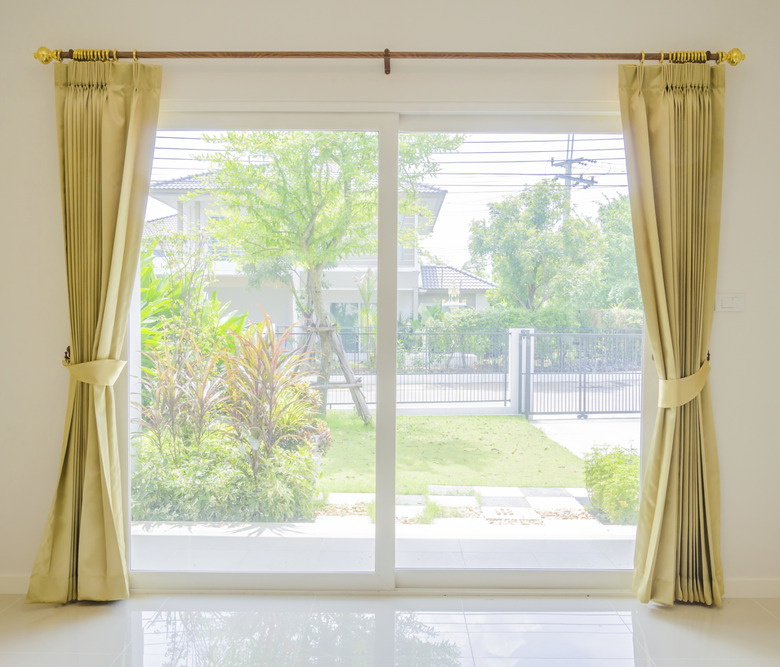How To Install Curtain Holdbacks
We may receive a commission on purchases made from links.
Installing curtain holdbacks gives you a decorative way to push your curtains to the side. You can also install post holdbacks at the top of the window to drape a scarf valance. If the window has trim, you'll need toggle bolts to keep the holdbacks from pulling out of the wall. With your handy do-it-yourself skills, a power drill and bits, a tape measure, and the right hardware, this is an ideal DIY project.
Things Needed
How to Install Curtain Holdbacks
1. Choose the Location
Look at the window treatment that covers your windows. If the drapes fall to the floor, you may want to put your metal holdbacks in the middle of the panel or window — or lower for a long swagged look. Where you place them is a matter of personal preference.
2. Choose the Anchoring Method
Make a pencil mark on one side of the window where you want to set the curtain holder. Measure from the edge of the window frame to that location. If it's within 3 inches, you should be able to install the curtain holdbacks directly into the wall with long screws. If it's past that, you need to install the curtain holdback with toggle anchor bolts so they don't rip out the drywall with the weight of the curtains.
3. Mark the Locations
Measure the location of the curtain holdback from the floor on the side you marked. Repeat on its opposite side and make a mark. The height for curtain holdbacks is often between 40 to 48 inches up from the floor, but it's a personal choice where you install them.
4. Mark the Holes
Hold the curtain hook drawback or medallion post bracket level at the penciled location, and make a mark through the holes for the screws with the pencil. Repeat on the other side.
5. Install the Screws
Make a small pilot hole with the drill and drill bit sized to the fastener if you're installing screws. Attach the screw bit and use the drill on low power to install the screw. Repeat for the other side. Add the medallion hardware as per the manufacturer's instruction, as these come in different varieties. It usually involves attaching the medallion to the bracket by tightening a screw on the side of the bracket's post to keep the medallion in place.
6. Drill a Toggle Bolt Hole
Drill a hole sized to the toggle bolt with a drill bit if you're installing in drywall without a stud behind it. Insert the screw through the hole in the curtain holdback and thread the winged toggle bolt onto its end.
7. Add the Toggle Bolt
Insert the toggle bolt wings by holding them while they're collapsed through the hole until they open inside the wall. Hold the fastener taut as you screw it in so the wings stay flat against the inside of the wall.
8. Check for Level
Place a level on the hook-shaped curtain holdbacks and readjust as necessary to ensure they're level.
Warning
Make certain to place the hook holdbacks with the arm that bends away from the window to hold the curtains.
Measure twice before drilling, or you'll end up having to repair the drywall.
Don't install curtain holdbacks on window trim.
Tip
If you have more than one window in the room with the same treatment, install the curtain holdbacks in the same place on all windows.
Wear goggles to protect your eyes as you work.
If you're installing medallion holdbacks at the top of the window, use a step-stool or a ladder; don't stand on a chair or table.
